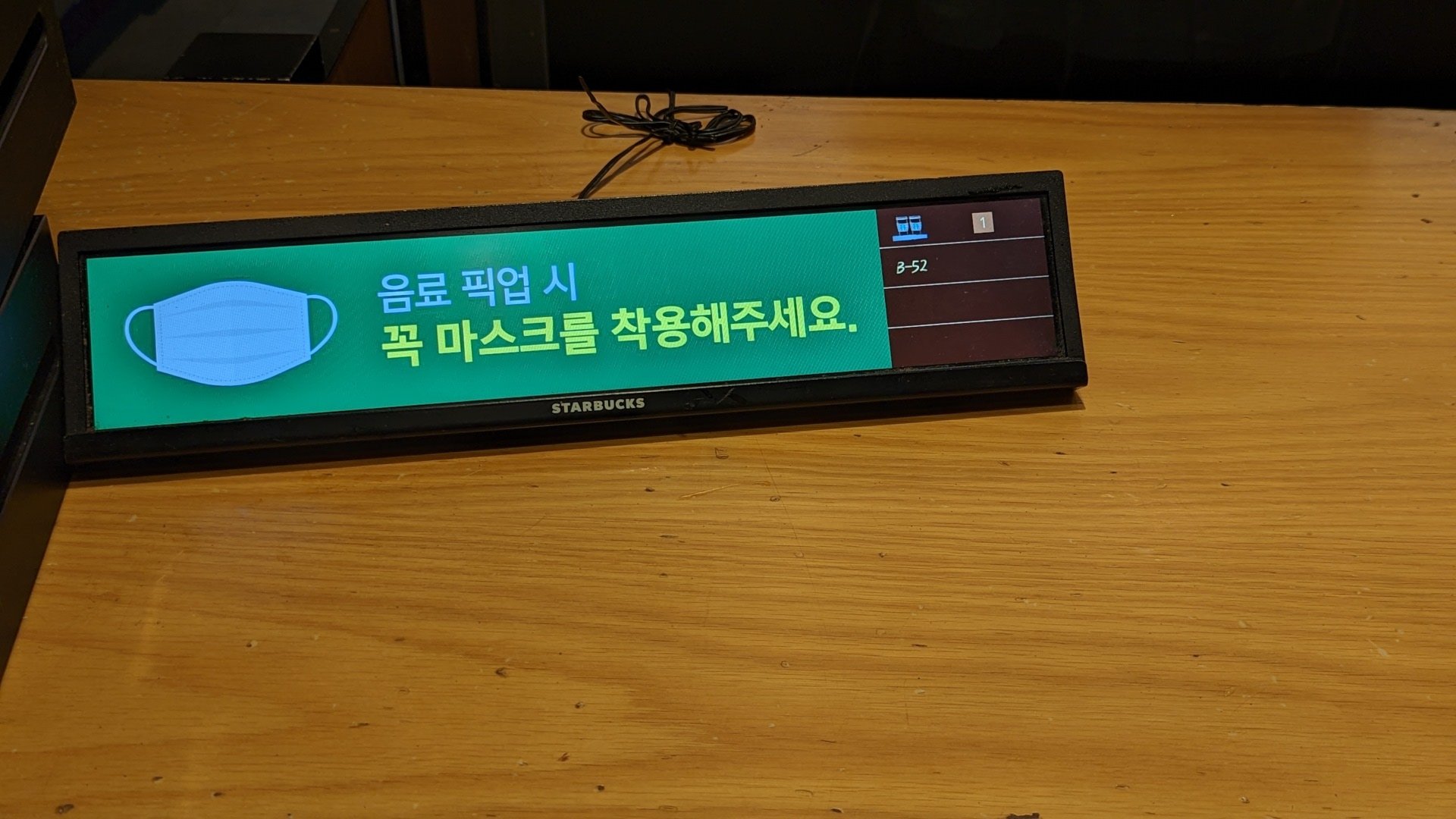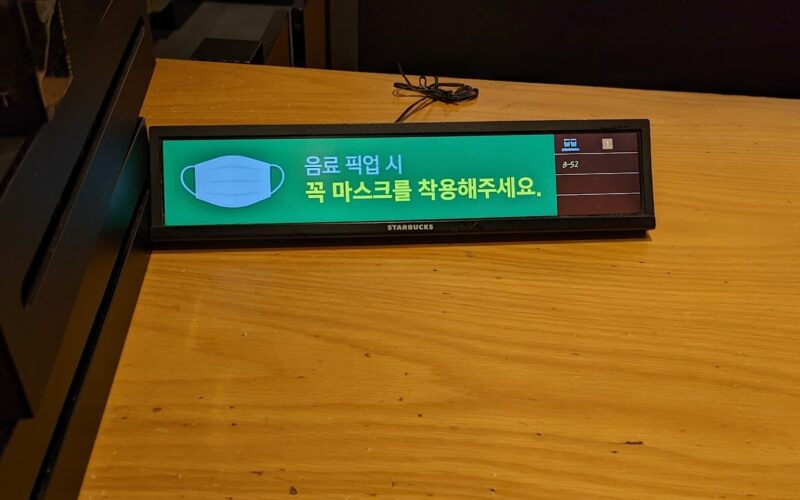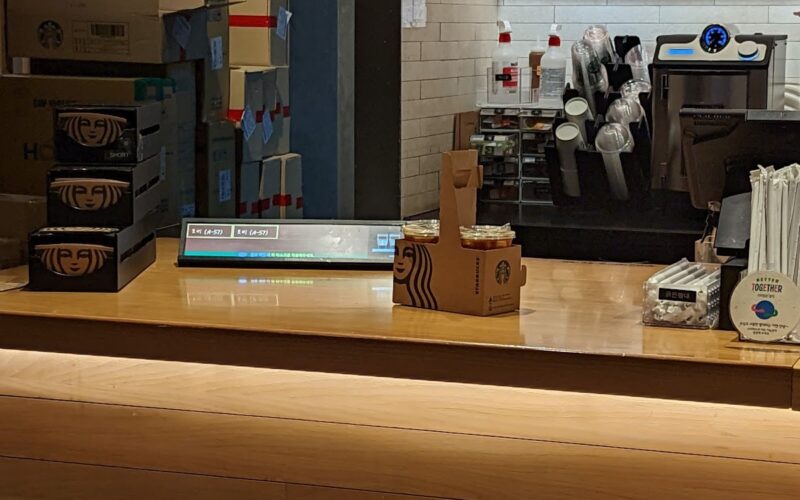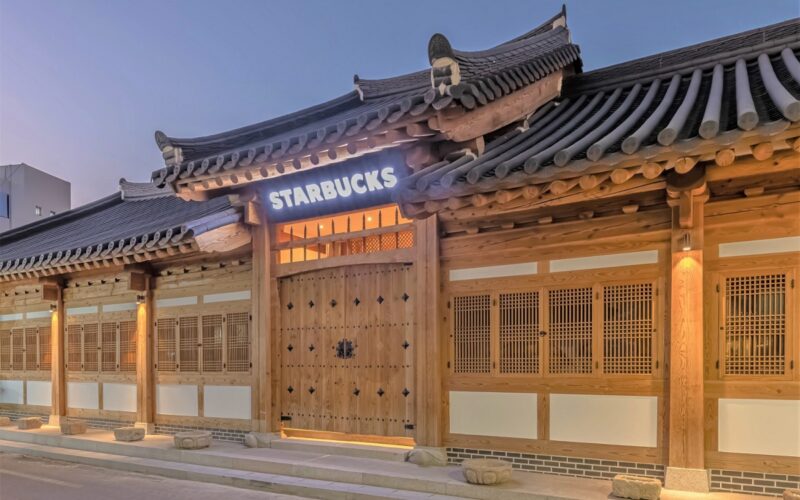Seoul | Starbucks still loves static signage – “the good old European coffee house can get by without displays”. But latest since the pandemic and the triumph of Drive Thru, the restaurant chain has sworn off digital detox and is investing heavily in digital signage. In Korea we discovered what may be the smallest menu board in the world.

Starbucks: Smallest Menu Board in the World
While the displays at Starbucks drive thru cannot be bright and large enough, signage in the inside of the restaurants remained for long fairly static. But an increasing number of franchisees are taking the digitization of menu boards in their own hands, lately also Starbuck itself. One of the reasons – the menu offering at Starbucks has changed immensely in recent years. In the USA, already 80 percent of the products sold are cold drinks. Today the coffee house chain caters to many tastes and F&B cravings that requires also great flexibility in digital signage.
Typical and part of the customer experience are the many personalization options and the call of the name when the order is ready. But in times of app orders, calling out names is no longer appropriate. That’s why Starbucks optimized the pickup process with the help of digital signage. The drinks ready for pickup with order numbers are shown on displays. From ordering to pickup – Starbucks has digitized all processes.
In Seoul we discovered perhaps the smallest menu board in the world in a Reserve flagship. Only a hand’s width high and an estimated 20 centimeters long, the guest has to know where to find the information. The display is controlled via the Barista’s PoS system, controlled and powered via a PoE network cable. We’re excited to see whether the world’s smallest display will soon be seen outside of Korea.


Starbucks in a historic atmosphere
The American coffee chain operates 1,600 stores in Korea in a joint venture with the South Korean retail group Shinsegae. In contrast to many other Starbucks countries, digital signage is largely avoided in South Korea. A remarkable restaurant opened a few days ago in a historic building in Daegu. As much of the Hanok’s original decor was retained as possible, including the roof tiles, beams and flooring, while creating a modern Starbucks experience. Honoring Daegu’s heritage as the birthplace of classical music spaces in Korea and a city of culture and art, Starbucks collaborated with global premium audio brand Bang & Olufsen to design the store. The restaurant now offers a space where you can listen to and enjoy music.




